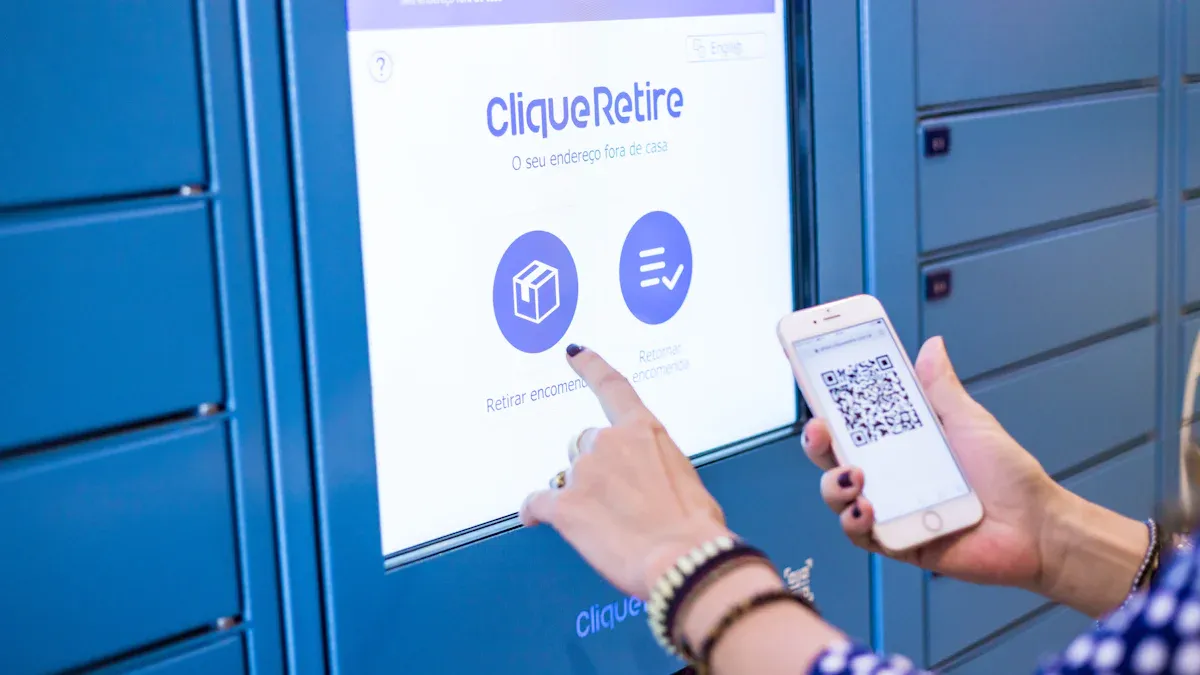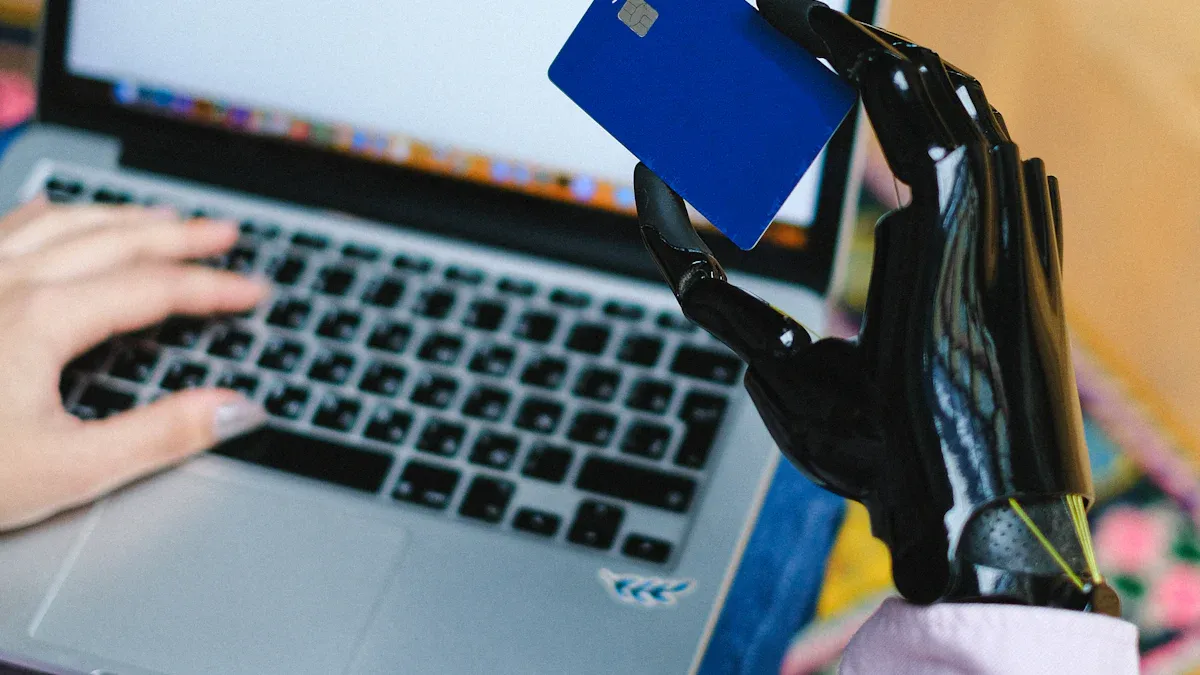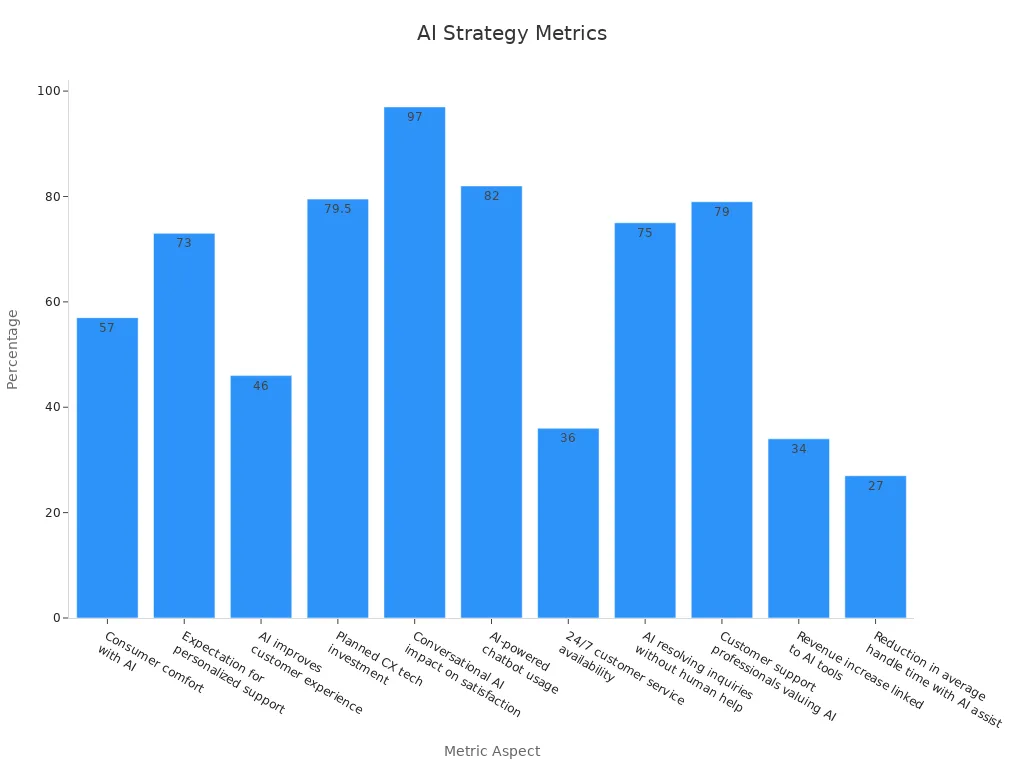Becoming an AI-Powered Shopper: How to Use Virtual Assistants to Find the Best Deals and Products

Shopping gets a lot easier when you use AI-powered virtual assistants. These smart helpers give you personalized recommendations and show you the best deals in real time. You can ask questions, compare prices, or even get instant product suggestions. Over 60% of shoppers now prefer AI-driven recommendations, and AI-powered visual searches boost conversions by up to 40%. If you want to become an AI-Powered Shopper, these tools make the process simple and enjoyable.
Key Takeaways
AI shopping assistants make online shopping faster and easier by understanding your questions and giving personalized product suggestions.
These assistants help you find the best deals by comparing prices in real time and alerting you to discounts and price drops.
You can use voice commands, chat, or even photos to search for products, making shopping more fun and hands-free.
Setting up an AI assistant is simple and lets you customize features like notifications, virtual try-ons, and price alerts to fit your needs.
Always check privacy settings and double-check important recommendations to shop safely and confidently with AI helpers.
AI Shopping Assistants

What They Are
AI shopping assistants are smart digital helpers that make your online shopping easier and more fun. You can think of them as your personal shopping guides. They answer your questions, help you find products, and even suggest deals you might like. These assistants use advanced technology to talk with you just like a real person would in a store. You can chat with them, speak to them, or even use pictures to search for what you want.
Many big retailers use these assistants. For example, Amazon has Rufus, which helps you order with your voice and gives you personalized suggestions. Walmart lets you shop using voice commands through Google Assistant or Siri. Sephora’s Virtual Artist lets you try on makeup virtually, and ASOS uses Style Match to help you find clothes from photos. These tools work all day and night, so you can shop whenever you want. In fact, 74% of internet users now prefer using chatbots for simple questions, showing how popular these assistants have become.
Tip: If you ever feel lost while shopping online, try using a store’s chatbot or voice assistant. They can save you time and help you discover new products.
How They Work
AI shopping assistants use several cool technologies to help you. Here’s how they do it:
Natural Language Processing (NLP): This lets assistants understand what you say or type, so you can talk to them in your own words.
Machine Learning (ML): They learn from your shopping habits and past choices to give you better recommendations each time.
Voice and Speech Recognition: You can use your voice to search for products or place orders, making shopping hands-free and easy.
Computer Vision: Some assistants let you upload a photo, and they’ll find similar products for you.
Technology | What It Does for You | Example Use |
|---|---|---|
NLP | Understands your questions and requests | Chatting with a bot |
Machine Learning | Learns your likes and suggests products | Personalized deals |
Computer Vision | Finds products from your photos | Style matching |
Speech Recognition | Lets you shop by talking | Voice ordering |
These technologies work together to make shopping faster, more personal, and a lot more fun.
AI Shopping Benefits

Save Time
Shopping online can take a lot of time, but AI shopping assistants help you move faster. You can ask questions in your own words, and the assistant understands you right away. Voice assistants and smart speakers let you search for products just by talking. These tools remember what you like and suggest items that fit your style, so you don’t have to scroll through endless pages.
AI assistants make it easy to find what you want.
They help you make decisions quickly, so you spend less time searching.
You get instant answers about products, prices, and availability.
Tip: Try using voice commands or chatbots when you shop. You’ll notice how much faster you can finish your shopping list!
Find Deals
Everyone loves a good deal. AI shopping assistants help you spot the best prices in real time. They compare prices from different stores and show you where to save money. Some platforms update prices every few seconds, so you always see the latest discounts. For example, AI-powered price comparison tools can refresh data every 10 seconds and reach 99% accuracy. This means you never miss out on a sale or a special offer.
AI tools also help stores make smarter pricing decisions, which can lead to better deals for you. Some platforms even help businesses increase profits by up to 4% while cutting decision time by 80%. As an AI-Powered Shopper, you get the benefit of these fast, data-driven price checks.
Personalization
AI shopping assistants make your experience feel personal. They learn from your past purchases and browsing habits. You get recommendations that match your taste, size, and budget. Some assistants even let you try on clothes or makeup virtually, so you can see how things look before you buy.
Personalized service makes shopping more fun and less stressful. In one study, chatbots reduced customer wait times and improved satisfaction. Another survey found that people who get personalized help from AI are more likely to keep using these tools and buy more. When you get suggestions that fit your needs, shopping feels easier and more enjoyable.
Becoming an AI-Powered Shopper
Getting Started
Ready to become an AI-Powered Shopper? You can start in just a few steps. First, pick the right assistant for your needs. Many stores offer their own virtual helpers, or you can use popular options like Google Assistant or Alexa. Most assistants only need a quick setup. You usually create a free account with your email. Next, you can customize how your assistant looks and acts. Change the color, name, or even the language to match your style.
Here’s a simple way to get started:
Sign up for an account with your favorite shopping assistant.
Personalize the assistant’s appearance and settings.
Add the assistant to your favorite shopping sites or apps.
Turn on notifications for price drops, new deals, or restocks.
Explore the assistant’s features, like chat, voice, or even image search.
Tip: Enable notifications so you never miss a flash sale or a restock of your favorite item.
Many shoppers now use these tools. Surveys show that 70% of shoppers want AI to help them get more from loyalty points. Gen Z shoppers are almost three times more likely than baby boomers to trust AI recommendations. Retailers also see the value—75% believe AI will be essential for staying competitive by 2026.
Using Features
Once you set up your assistant, you can unlock many helpful features. Try using voice commands to search for products or ask questions. Chatbots can answer your questions instantly, saving you time. Some assistants let you upload a photo to find similar items. Others offer virtual try-ons, so you can see how clothes or makeup look before you buy.
Here’s a quick look at how these features help you shop smarter:
Feature | What It Does | Shopper Benefit |
|---|---|---|
Price Alerts | Notifies you when prices drop | Never miss a deal |
Virtual Try-Ons | Lets you see products on yourself virtually | Boosts confidence before buying |
Instant Chat Support | Answers questions right away | Saves time and reduces frustration |
Voice Shopping | Lets you shop hands-free | Makes shopping faster and easier |
Image Search | Finds products from your photos | Helps you discover new styles |
Advanced features really make a difference. For example, Sephora’s Virtual Artist increased customer engagement by 30%. H&M’s virtual assistant boosted satisfaction scores by 70%. AI-powered assistants can resolve up to 85% of routine questions, which means you get help faster and spend less time waiting.
Note: AI shopping assistants can reduce cart abandonment by up to 30% and help you finish your purchases without hassle.
Tips for Success
Want to get the most out of your AI shopping experience? Try these tips:
Use both voice and chat features. Some questions are easier to ask out loud, while others work better in a chat.
Set up price alerts for your favorite products. You’ll get notified as soon as prices drop.
Try virtual try-ons for clothes, glasses, or makeup. This helps you make better choices and avoid returns.
Check your assistant’s privacy settings. Make sure you feel comfortable with how your data is used.
Explore loyalty programs. Many AI tools help you track and use your points for extra savings.
Here’s a chart showing how AI-powered strategies help shoppers and businesses succeed:

You’re not alone in this journey. Research shows that 73% of shoppers expect brands to understand their unique needs. AI-powered chatbots now handle up to 95% of customer interactions, and users save over two hours a day by letting assistants handle routine questions. Businesses see up to 15% more revenue from personalization and save millions in staffing costs.
Tip: The more you use your assistant, the better it gets at helping you. Your shopping experience becomes faster, more personal, and more fun.
As an AI-Powered Shopper, you join a growing group of people who use smart tools to save time, find deals, and enjoy shopping more. AI-powered shopping experiences keep getting better, with smarter recommendations and more ways to personalize your journey.
Common Concerns
Privacy
Shopping with AI assistants can feel a bit scary when you think about your personal data. Many people worry about how their information is used. In fact, 68% of shoppers around the world feel concerned about their online privacy. Here are some reasons why:
AI assistants collect lots of data, like your voice, location, web activity, and even photos.
Sometimes, voice assistants record conversations by accident.
Weak passwords and stolen credentials are the biggest causes of data breaches.
About 81% of users think their information might be used for things they did not agree to.
75% of people worry about AI risks, even if they like the benefits.
Companies know these worries are real. They use special tools to protect your data, like adding noise to information (differential privacy), using fake data for testing (synthetic data), and encrypting your data so no one can read it without permission. Privacy laws in places like the EU also make sure companies tell you what data they collect and why.
Tip: Always check the privacy settings on your shopping assistant. Use strong passwords and update them often.
Accuracy
You want to trust the recommendations you get from AI shopping assistants. Most of the time, these tools give you good advice, but they are not perfect. Studies show that people rely on AI advice, but sometimes the answers can be off by 10% to 30%. For example, in one experiment, AI gave answers that were sometimes 70% to 90% above or below the correct answer. This means you should double-check important choices, especially for big purchases.
AI assistants can answer questions quickly and help you decide faster. Still, they might make mistakes or give answers that sound right but are not. Experts say it is smart to use AI as a helper, not the only source of truth.
Note: If something feels off, compare the AI’s suggestion with other sources or reviews.
Accessibility
AI shopping assistants help many people shop more easily, including those with disabilities. These tools offer features like voice commands, virtual try-ons, and easy-to-read product descriptions. Here’s a look at how AI makes shopping more accessible:
AI Application Area | Accessibility Benefit | Retailer Examples |
|---|---|---|
Virtual Assistants & Try-On | Help with real-time guidance and virtual fittings for all users | Walmart, Warby Parker |
Personalized Recommendations | Suggest products for special needs, allergies, or medical conditions | Macy’s, Lush |
In-Store Navigation | Give audio and visual cues to help find products, great for mobility or vision issues | Target, Home Depot, Kroger |
Accessible Apps & Websites | Improve screen reader use, alt text, and keyboard navigation | Many major brands |
Voice Commerce | Let you shop hands-free and manage orders easily | Amazon Alexa, CVS Pharmacy |
The CDC says 1 in 4 adults in the U.S. has a disability, so these features matter a lot. Researchers also say that AI shopping tools should keep getting better for everyone, not just for people with vision problems. Companies need to listen to all users and make sure their tools are easy and safe for everyone.
Tip: Try out voice commands or virtual try-ons if you need extra help. Many assistants are designed to make shopping easier for all.
You can shop smarter and faster when you use virtual assistants. These tools help you find deals, answer questions, and give you personal suggestions. Many big brands like Amazon, Walmart, Sephora, and H&M use AI to make shopping better for you.
AI assistants now handle up to 85% of customer service, cut costs by 30%, and boost sales by 67%.
Almost half of shoppers cannot tell the difference between AI and a real person.
Anyone can become an AI-Powered Shopper with just a few simple steps. Give these tools a try and see how much easier shopping can be!
FAQ
How do I know if an AI shopping assistant is safe to use?
Always check reviews and privacy settings before you start. Look for assistants from trusted brands. If you see a lock icon or “https” in the web address, your data stays safer.
Can I use AI shopping assistants on my phone?
Yes! Most assistants work on smartphones and tablets. You can use them through apps or mobile browsers. Some even let you shop with your voice using Siri, Google Assistant, or Alexa.
Will AI assistants remember my shopping preferences?
They do! AI assistants learn from your past choices. You get better recommendations over time. If you want to reset your preferences, you can usually clear your data in the settings.
What if the AI gives me a wrong suggestion?
Don’t worry! You can always double-check with other sources or read reviews. AI helps you shop faster, but you still make the final choice.
See Also
The Future Of Retail Lies In AI-Powered Stores
Transforming Online Store Management With AI E-Commerce Tools
What Retailers Should Understand About AI-Powered Corner Stores
Starting An AI-Powered Corner Store With Low Initial Costs
Cloudpick Checkout Computers Boost Efficiency And Customer Satisfaction
